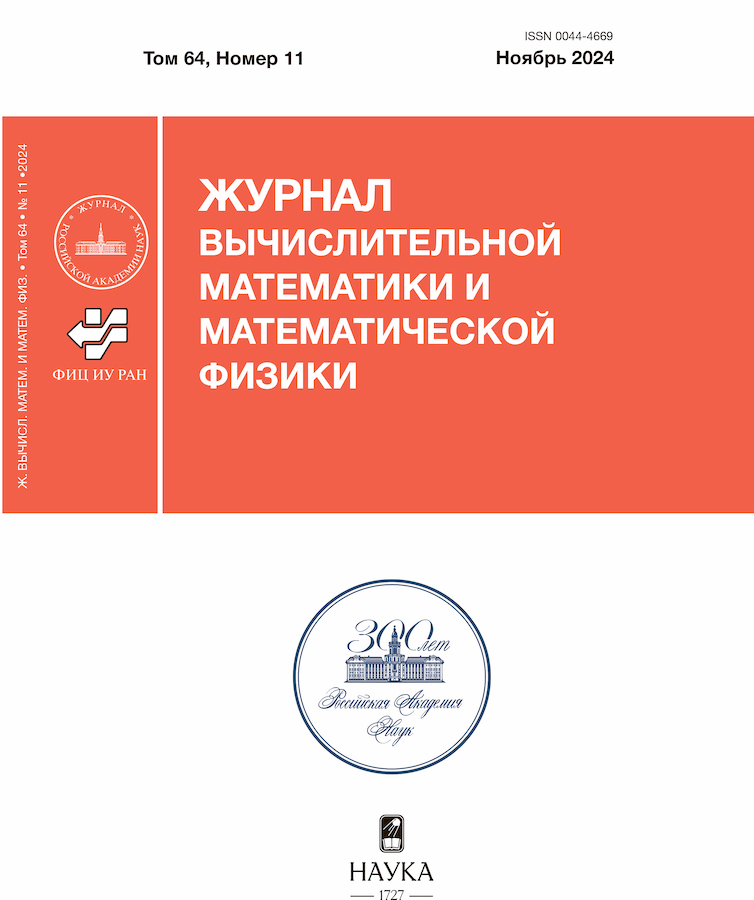MAXWELL’S REPRESENTATION OF THE SATELLITE APPROXIMATION POTENTIAL. ON ONE METHOD FOR DETERMINING THE MAIN AXES OF INERTIA OF A SOLID BODY USING THE PARAMETERS OF ITS SECOND-ORDER MULTIPOLE
- Autores: Nikonova E.A.1
-
Afiliações:
- FRC CSC RAS
- Edição: Volume 64, Nº 11 (2024)
- Páginas: 2205-2211
- Seção: Mathematical physics
- URL: https://rjonco.com/0044-4669/article/view/665150
- DOI: https://doi.org/10.31857/S0044466924110152
- EDN: https://elibrary.ru/KFNPCB
- ID: 665150
Citar
Texto integral
Resumo
Maxwell’s approach to the representation of homogeneous harmonic functions in the form of a superposition of derivatives in directions, developed by him within the framework of the study of problems of electrostatics, is applied to the representation of the potential of satellite approximation. The specified representation is determined by two unitary vectors located in a plane orthogonal to the intermediate axis of inertia of the body. In this case, the axis of inertia of the body corresponding to its smallest moment of inertia is the bisector of the angle formed by these vectors. The geometric meaning of the vectors is established: they are orthogonal to the circular sections of the body inertia ellipsoid constructed for the center of mass of the body. The above makes it possible to propose an approach to finding the main axes of inertia of a body based on Maxwell’s representation of its satellite approximation potential.
Bibliografia
- Белецкий В.В. Движение искусственного спутника относительно центра масс. М.: Наука, 1965.
- Maciejewski A.J. Regular precessions in the restricted problem of the rotational motion // Acta Astronomica. 1994. V. 44. P. 301–316.
- Elipe A., Vallejo M. On the attitude dynamics of perturbed triaxial rigid bodies // Celestial Mechanics and Dynamical Astronomy. 2001. V. 81. P. 3–12.
- Celletti A. Stability and Chaos in Celestial Mechanics. Berlin: Springer, 2010.
- Newman W.I. Rotational kinematics and torques for triaxial bodies // Icarus. 2013. V. 223. Iss. 1. P. 615–618.
- MacCullagh J. On the attraction of ellipsoids // Transactions of the Royal Irish Academy. 1853. V. XXII. P. 379—397.
- Maxwell J.C. A treatise on electricity and magnetism Vol I, Oxford: Clarendon Press. 1873.
- Гобсон Е.В. Теория сферических и эллипсоидальных функций. Перевод с англ. С.В. Фомина, М.: ИЛ, 1952. 476 с.
- Тихонов А.А., Петров К.Г. Мультипольные модели магнитного поля Земли // Космич. исслед. 2002. Т. 40. №3. С. 219–229.
- Антипов К.А., Тихонов А.А. Мультипольные модели геомагнитного поля: построение N-го приближения // Геомагнетизм и аэрономия. 2013. Т. 53.№2. С. 271–281.
- Мещеряков Г. А. Задачи теории потенциала и обобщенная Земля. М.: Наука, 1991.
- Chao B.F., Shih S.A. Multipole Expansion: Unifying Formalism for Earth and Planetary Gravitational Dynamics // Surveys in Geophysics. 2021. V. 42. P. 803–838.
- Dobrovolskis A.R., Korycansky D.G. The quadrupole model for rigid-body gravity simulations // Icarus. 2013. V. 225. №1. P. 623–635.
- Nikonov V. I. Multipole Representation of the Gravitational Field of the Asteroid (16) Psyche // Comput. Math. and Math. Phys. 2023. V. 63.№12. P. 2572–2579.
- Arnold V. Topological content of the Maxwell theorem on multipole representation of spherical functions // Topological Meth. in Nonlinear Analys. 1996. V. 7.№2. P. 205–217.
- Гильберт Д., Кон-Фоссен С. Наглядная геометрия. Пер. с нем. С.А. Каменецкого. М.-Л.: ОНТИ, 1936. 304 с.
- Буров А.А., Никонов В.И. Вычислительные задачи теории гравитационного потенциала. Учебное пособие. М.: Белый ветер, 2023. 64 с.
- Чандрасекхар С. Эллипсоидальные фигуры равновесия. Перевод с анг. В.Н. Рубановского, под ред. В.В. Румянцева. М.: МИР, 1973. 288 с.
- Dobrovolskis A. R. Inertia of Any Polyhedron // Icarus. 1996. V. 124.№2. P. 698–704.
- Dobrovolskis A. R. Classification of ellipsoids by shape and surface gravity // Icarus. 2019. V. 321. P. 891–928.
- Буров А.А., Никонова Е.А. Производящая функция компонент тензора Эйлера-Пуансо // Докл. РАН. Физика, технические науки. 2021. Т. 498. С. 53–56.
- Burov A.A., Nikonova E.A. Generating function of the inertial integrals for small celestial bodies // Celestial Mech. and Dynamic. Astron. 2022. V. 134.№4. ArtNo. 37.
Arquivos suplementares










